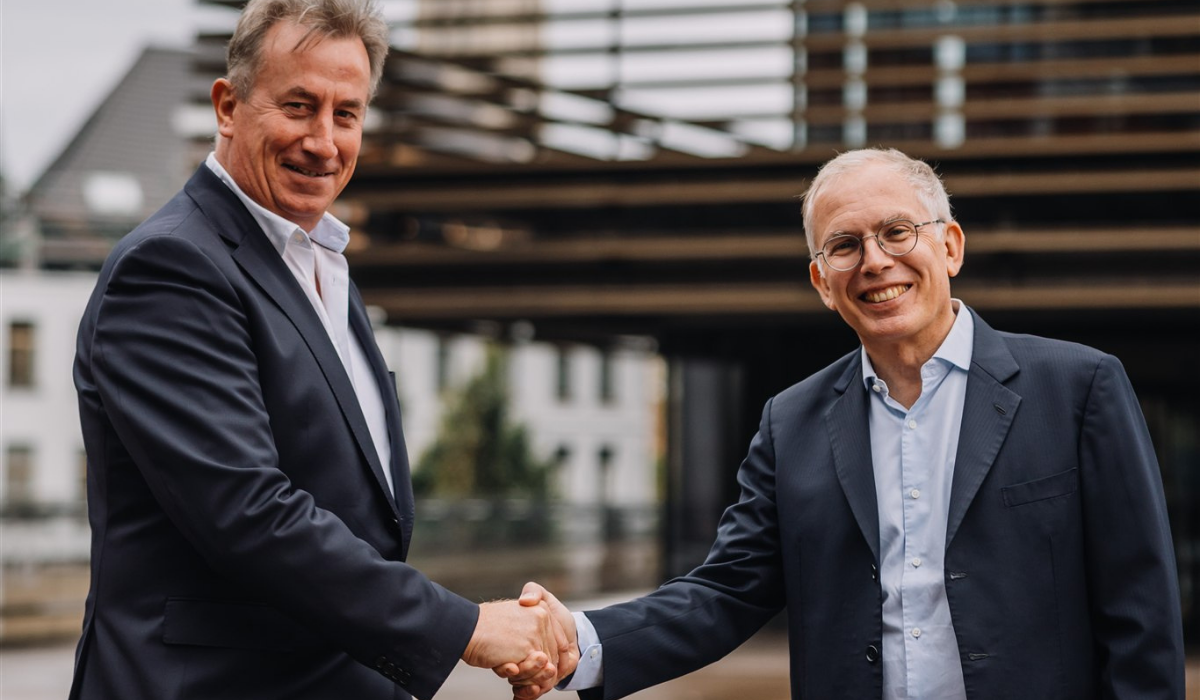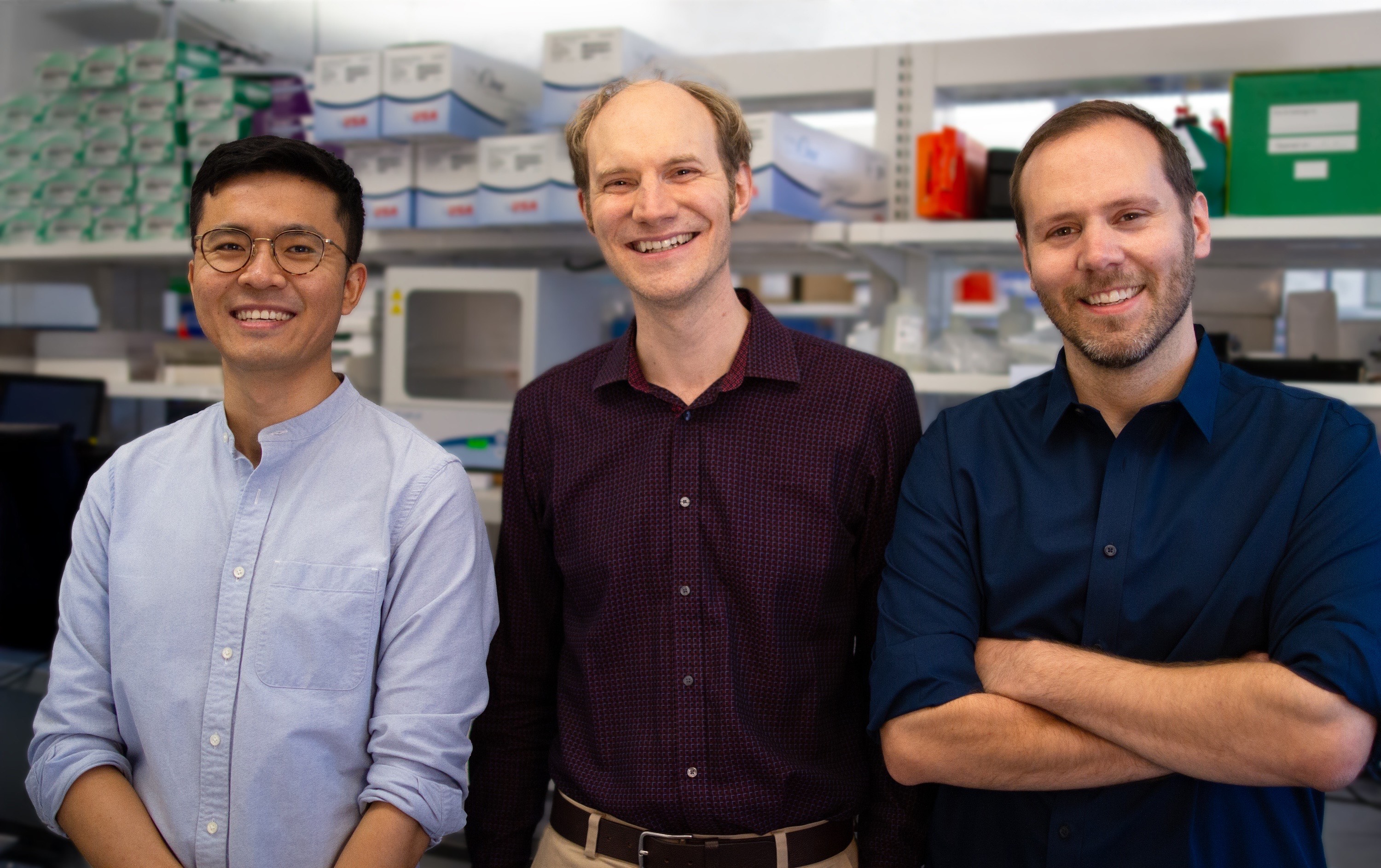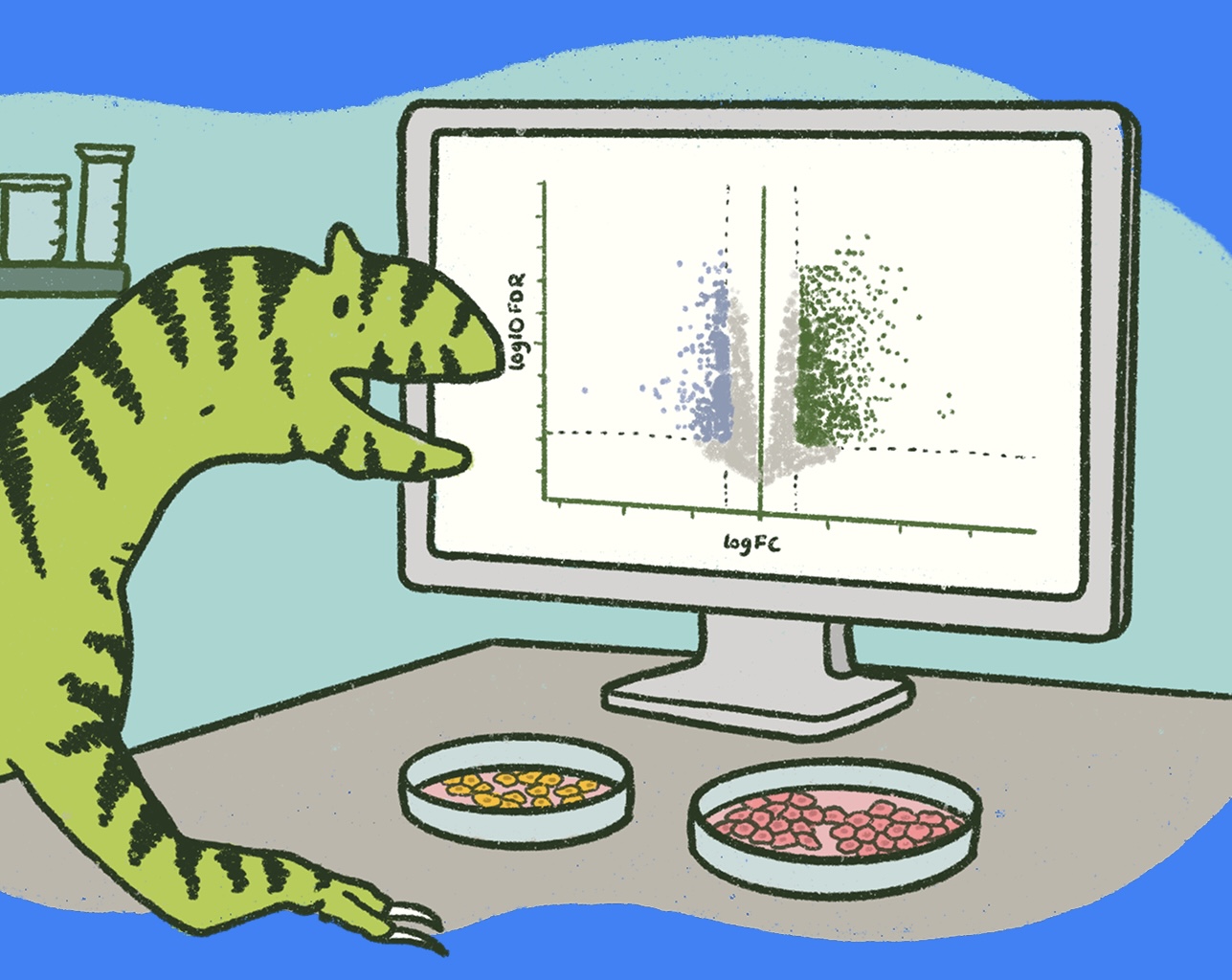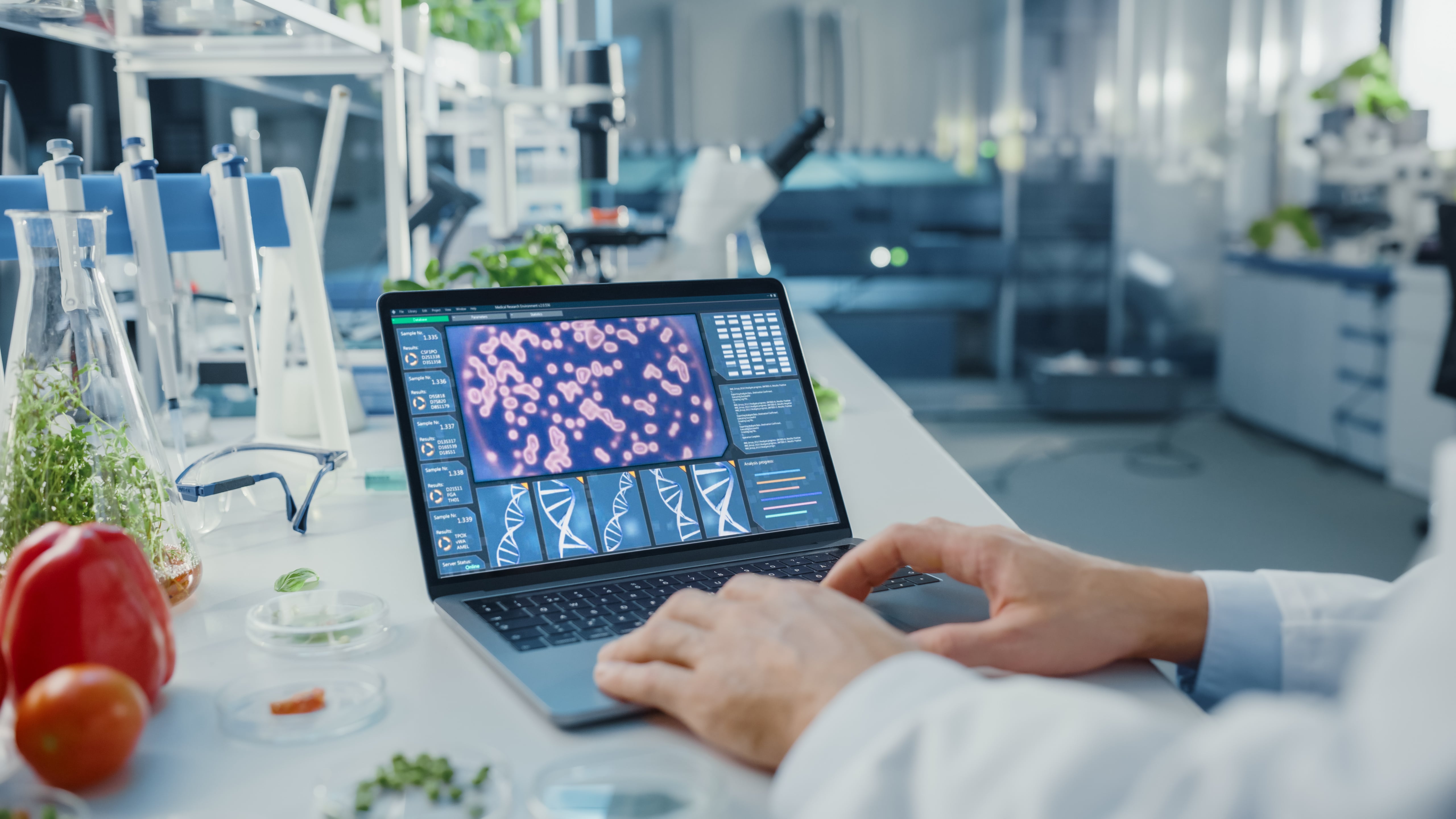
Why now is the time for programmable living medicines: insights from Jim Collins, Aoife Brennan, and Jason Kelly
Why now is the time for programmable living medicines: insights from Jim Collins, Aoife Brennan, and Jason Kelly
Nearly two decades after the birth of synthetic biology, the dream of using engineered microbes as therapeutics is quickly becoming a reality. Plummeting DNA sequencing costs have led to a surge of studies revealing that the microbes living in and on us are critically important for maintaining good health. This concept of microbes protecting us from disease begs the question: Can we harness microbes as a means of treating disease?For synthetic biologists, this is a call to action – to uncover how microbes impact their human hosts, to design microbial therapeutics that can address disease states, and to utilize the computing power of microbes to create medicines that are precise, sustainable, and, perhaps most interestingly -- living.This call to action inspired SynBioBeta to gather a small group academics, biotechnology leaders, and curious investors for a mixer, “Designing Living Medicines,” on February 25 in Cambridge, MA. Led by SynBioBeta CEO John Cumbers, the event showcased the work of three pioneers in synthetic biology: MIT professor Jim Collins, Synlogic CEO Aoife Brennan, and Ginkgo Bioworks CEO Jason Kelly.Over the course of an hour, each speaker gave a short talk, followed by a panel discussion. The topics discussed were broad, including the transformative potential of biotechnology, practical challenges in producing living medicines, and how to combat biology’s complexity, but one overarching theme stood out – the stage is set and living medicines are nearly ready to steal the show.
Biology is fundamentally programmable
Jason Kelly was the first to take the stage with a comparison many of you have probably heard before: “Biology is fundamentally programmable. Computers are fundamentally programmable. Where computers move bits, biology moves atoms,” he said. At the core of both computers and biology is a programmable code, consisting of 0’s and 1’s for computers and A, T, G, and C ‘s for biology. During his presentation, Kelly emphasized that this parallel is something the world should be very excited about. Just as transistor technology improved exponentially according to Moore’s law, he said, “biology has three exponentially improving biological technologies: DNA sequencing, DNA synthesis, and foundries.”Kelly then turned to the power of biology and how it can allow us to redefine the way we think about design rules. For example, where nanofabrication can create transistors at the nanometer scale, biology can create a reversible rotary motor capable of powering a bacterial flagellum. He then showed an image containing a variety of electronics, including a camera, a smartphone, and laptop, alongside a plant. He asked “which one of these objects is the most complex?” The unanimous choice was the plant, to which Kelly remarked “Of course it’s the plant. Plants create materials that are self-repairing, self-assembling, self-replicating, and renewable.” The goal of synthetic biology is to tap into that power. As long as we can continue to improve our abilities to control biology, Kelly believes we will eventually make everything using biology -- not just our medicines.

Ginkgo Bioworks CEO Jason Kelly at SynBioBeta SF 2017.
Bridging the gap between academic research and creating therapeutics
Jim Collins on academic researchAcademic research has been instrumental in increasing the complexity of engineered functions that are possible in cells. Next to take the stage, Jim Collins highlighted a wonderful example from academic research: engineering a probiotic bacterium to sense inflammation in the mouse intestine and produce a fluorescent protein in response.Studies like this help move synthetic biology one step closer to the sense-and-respond capability that living medicines can provide. However, when administering an engineered microbe to a human patient, some more practical challenges come into play.Aoife Brennan on creating living therapeuticsThe more complex a living therapeutic is, the more ways it can fail. To maximize success, Synlogic has chosen a well-studied probiotic bacterium, Escherichia coli Nissle, as their living medicine chassis organism. During her brief presentation, Brennan explained that this choice simplifies their approach because “we use a strain that does not replicate in the gut and is incapable of conjugating to other bacteria,” reducing patient-to-patient variability through fine-tuning and prediction of dosages.This strategy of targeting relatively well understood biologies to maximize the likelihood of success is something Brennan expanded on later on the panel session. Such an approach, she said, allows the Synlogic team to direct their creativity toward other things, like building tools, expanding platforms, and scaling and manufacturing bacteria. In other words, rather than trying to perform complex therapeutic functions with their engineered microbes, Synlogic has prioritized building strains that yield reproducible results and can be produced at the appropriate scale.By focusing on understanding the pharmacokinetics and pharmacodynamics of therapeutics and standardizing their manufacturing steps, Synlogic has developed the foundational technologies and understanding that will pave the way for using living medicines in patients.

Synlogic CEO Aoife Brennan.
Increasing predictability is key
After thought-provoking talks from Kelly, Collins, and Brennan, it was time to allow the audience to ask questions of the experts. Cumbers opened the discussion with an incisive question: “What tool or technology do you wish you had, but you don’t?” -- the same question he asked Collins 12 years ago. While Collins didn’t remember his answer then, Cumbers did. Collins wished for a tool that would enable gene editing to be done inside of cells, at their site of identification. Or as Cumbers summarized, “You wished for CRISPR.”This time, Collins answered, “We’re lacking real-time feedback tools that allow us to see what is happening inside living cells.” Such a tool could replace flow cytometry, greatly increase the speed of the design-build-test cycle, and enable us to design genetic circuits with more predictability.Brennan then chimed in: “What we need are tools for optimizing the activity of engineered bacteria at the site of application -- whether that be the gut, field, or root system of a crop.” While this tool would also be aimed at increasing predictability, it would do so in a more application-centric way. In Brennan’s opinion, this will help enable synthetic biology to have a significant impact on many industries beyond just living medicines.The topic of predictability resurfaced when the panel was asked how to make the go/no-go decision about pursuing a project. Kelly said that the lack of predictability within engineering biological functions can make it very difficult to judge when to cut off a project. He went on to say that solving the lack of predictability will be a major milestone for biological engineering because it will reduce the risk associated with any given project. The reduced risk will allow investors to feel more confident in funding biotechnology for applications with lower profit margins than those in therapeutics, such as energy, environment, and agriculture.
Dealing with biological complexity
Increasing the predictability of engineered biological systems will continue to progress, but, in the meantime, it’s important to not let complexity halt early efforts to produce living medicines. One audience member asked the panel “Considering that machine learning has become too complex for humans to comprehend, how complex will biology become in the future? Is understanding that complexity important for creating biotechnologies?” Collins addressed the question by saying that, although it is useful, “we don’t need to understand every aspect of a biological system in order to engineer it.” Collins added, “Biology can be intimidating. I have students come into my office and they see all of the textbooks I have and think that there is nothing left to discover, but in reality we are just scratching the surface.” Despite our incomplete understanding of biology, Collins pointed out that we are already capable of engineering biology to a certain extent. Kelly echoed these thoughts, adding that “a certain level of abstraction is necessary” in order to continue moving forward.Another audience member asked about the role of in silico modeling in aiding the development of living medicines. Collins was the first to address this question, reminding that audience that “when synthetic biology started, there was quite a bit of in silico work with circuit design. This was driven by the fact that the engineers that were transitioning into biology didn’t have any lab space and did most of their work in silico.” However, he said, much of engineering doesn’t have a significant in silico component, and biology may be moving away from in silico modeling as it moves towards different applications.Brennan supported models -- and empirical datasets that help build them -- as incredibly powerful tools. Kelly agreed, offering an example from Ginkgo: understanding how different classes of enzymes work -- alone, in combination with other enzymes, and in the physiological context of the cell -- is extremely important. To reach this goal, the Ginkgo team builds upon knowledge from previous projects in combination with in silico models. This approach enables them to make informed decisions about the optimal route for producing any particular molecule. As more data is gathered for development of living medicines, this approach may help provide some needed predictability.With the infrastructure in place, companies like Synlogic and Ginkgo Bioworks are poised to produce the first generation of living medicines. However, it is important that we continue increasing the predictability of engineered biological systems in order to utilize the programmability and potential that they offer. If we can do that, then maybe we will see a day where, as Jason Kelly envisioned, we use biology to make everything.Want to learn more about the potential of living medicines? Aoife Brennan will be speaking on engineered cell therapies at SynBioBeta 2019 October 1-3 in San Francisco, CA.



.svg)











.gif)